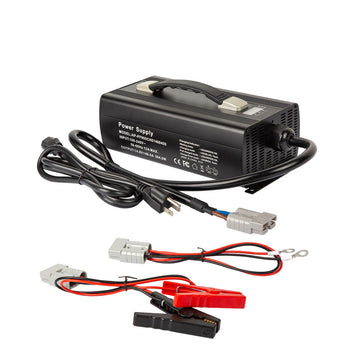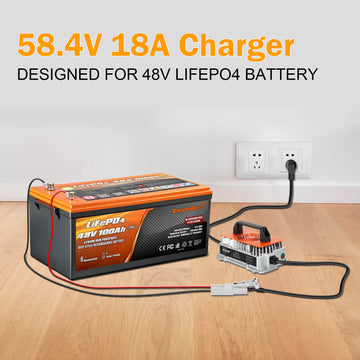What Is The Best Golf Cart Battery? [A Comprehensive Guide]
Table of contents:
-
What type of battery does a golf cart take?
-
What battery is best for a golf cart?
-
What voltage should a golf cart battery be?
-
What is the real-life range of the 36V and 48V Enjoybot golf cart batteries?
-
Essential Maintenance Tips for Your LiFePO4 Battery
Imagine a serene day on the golf course, the sun casting a gentle warmth as you glide effortlessly from hole to hole in your golf cart. This seamless experience, often taken for granted, owes much to a critical yet unassuming component: the golf cart battery. Far beyond the fairways and greens, these batteries serve as the heartbeat for various applications - from bustling resort transport to essential duties in gated communities.
The performance of a golf cart is deeply intertwined with the quality and type of its battery. Consider the contrast between Sunnyvale Golf Course, where advanced lithium-ion batteries have redefined the golfing experience with longer playtime and faster speeds, and the older Riverside Golf Club, where outdated batteries often dampen the fun with mid-game power losses.
In this comprehensive guide, we delve into the core of golf cart performance – the battery. From exploring diverse types like the traditional lead-acid to the efficient lithium-ion to understanding their life cycles and maintenance, we'll navigate through the intricacies that make a battery more than just a power source. This article isn't just a guide; it's a journey into how the right choice and care of your golf cart's battery can revolutionize your experience on and off the course.
What type of battery does a golf cart take?
A. Common Battery Types
1. Lead-acid batteries
Example: Trojan T-105
Description: The Trojan T-105, a 6-volt deep-cycle battery, is a staple in the golf cart world. Known for its durability and reliability, this lead-acid battery has long been the standard for golf cart power.
Use Case: Perfect for golfers or cart operators who prioritize dependability and have a moderate budget.
2. AGM (Absorbent Glass Mat) Batteries
Example: Fullriver DC105-12
Description: The Fullriver DC105-12, a 12-volt AGM battery, offers maintenance-free operation. Its excellent vibration resistance and sealed design mean no water refilling is necessary.
Use Case: Ideal for those who face rugged terrains and prefer a low-maintenance battery solution.
3. Gel Batteries
Example: Exide GEL ES2400
Description: Known for its deep cycling capabilities, the Exide GEL ES2400, a sealed gel battery, minimizes spillage risks and maintenance needs with its thick gel electrolyte.
Use Case: Suitable for golf carts operating in conditions where spillage is a concern, like uneven terrains or near water.
4. Lithium-ion Batteries
Example: Enjoybot Lifepo4 batteries
Description: The Enjoybot Lifepo4 36V and 48V batteries illustrate the strengths of lithium-ion technology—lightweight, high energy density, and quick charging capabilities.
Use Case: Best for those seeking efficiency and longevity, and for lighter golf carts due to its reduced weight.
Pls note the difference between the lithium battery and the lifepo4 battery:
Lithium batteries and LiFePO4 batteries, both of which fall under the broader category of lithium-ion batteries, have several key differences:
1. Chemistry and Material Composition: The primary difference lies in their cathode materials. Traditional lithium batteries use various lithium compounds like lithium cobalt oxide (LiCoO2) or lithium manganese oxide (LiMn2O4) in their cathodes, whereas LiFePO4 batteries use lithium iron phosphate (LiFePO4).
2. Safety and Stability: LiFePO4 batteries are generally considered safer. Their chemistry is more stable, reducing the risk of thermal runaway—a condition where the battery overheats and potentially catches fire or explodes. In contrast, traditional lithium batteries can be more vulnerable to such risks, especially under stress or if damaged.
3. Life Cycle: LiFePO4 batteries often have a longer lifespan, capable of more charge/discharge cycles before their capacity significantly degrades. This makes them ideal for applications where the battery is frequently charged and discharged.
4. Energy Density: Traditional lithium batteries typically have a higher energy density, meaning they can store more energy for their size or weight than LiFePO4 batteries. This makes them more suitable for applications where space and weight are critical factors, like smartphones or laptops.
5. Operating Temperature Range: LiFePO4 batteries usually offer better performance at both high and low temperatures compared to traditional lithium batteries, making them suitable for outdoor or rugged applications.
6. Cost: Initially, LiFePO4 batteries were more expensive to produce than traditional lithium batteries. However, as technology advances and production scales up, the cost difference is decreasing.
7. Environmental Impact: LiFePO4 batteries are considered more environmentally friendly due to the absence of cobalt, a toxic and environmentally harmful element often used in traditional lithium batteries.
8. Voltage: The nominal voltage of a LiFePO4 cell is 3.2V, compared to 3.6V or 3.7V for typical lithium-ion cells. This difference is important in applications where voltage affects performance.
Let's consider practical examples to illustrate the differences between traditional lithium batteries and LiFePO4 batteries:
1. Smartphones and Laptops (Traditional Lithium Batteries): These devices require compact and lightweight batteries with high energy density to power them for extended periods without adding much weight. Hence, they often use traditional lithium batteries (like lithium cobalt oxide batteries) due to their higher energy density and compact size.
2. Electric Vehicles (Both Types): Some electric vehicles (EVs) use traditional lithium batteries for their higher energy density, which translates to longer driving ranges on a single charge. However, more EV manufacturers are considering LiFePO4 batteries for their stability, safety, and longer lifecycles, especially in vehicles where weight is less of a concern.
3. Solar Power Storage Systems (LiFePO4 Batteries): These systems benefit from the long lifespan and stability of LiFePO4 batteries. They are ideal for storing solar energy because they can endure many charge/discharge cycles without significant capacity loss, making them cost-effective in the long run.
4. Electric Bicycles (LiFePO4 Batteries): E-bikes benefit from the longer life cycle and safety features of LiFePO4 batteries. These batteries can withstand frequent charging and discharging, common in e-bike usage, without quickly degrading performance.
5. Portable Power Stations (LiFePO4 Batteries): For outdoor activities or backup power solutions, portable power stations often use LiFePO4 batteries due to their stability across temperature ranges and safety.
6. Medical Devices (Traditional Lithium Batteries): In medical devices where size and weight are critical, such as portable medical monitors, traditional lithium batteries are preferred for their compactness and high energy density.
These examples demonstrate how the choice between traditional lithium batteries and LiFePO4 batteries depends on the specific needs of the application, such as energy density, safety, lifespan, and environmental impact.
While traditional lithium batteries offer higher energy density, LiFePO4 batteries are prized for their safety, stability, longer life cycle, and environmental friendliness, though they typically have lower energy density and were initially more costly. The choice between these battery types largely depends on the specific requirements of the application they are intended for.
What battery is best for a golf cart?
When assessing the best battery type for golf carts, LiFePO4 (Lithium Iron Phosphate) batteries emerge as a standout option due to their unique combination of safety, performance, and longevity. Let's explore their features and consider if they truly are the optimal choice for golf carts.
Key Features of LiFePO4 Batteries
1. Safety: LiFePO4 batteries are known for their thermal and chemical stability, significantly reducing the risk of overheating or combustion, a notable advantage over other lithium-ion varieties.
2. Long Lifespan: These batteries often boast 3000-5000 charge cycles, far exceeding the 500-1000 cycles typical of lead-acid batteries, translating into years of reliable service.
3. Efficiency: With a higher energy density than lead-acid batteries, LiFePO4 batteries provide a longer range per charge, making them well-suited for extended use on the golf course.
4. Low Maintenance: The absence of liquid electrolytes means no need for water top-ups or corrosion concerns, simplifying upkeep.
5. Environmental Impact: These batteries are more eco-friendly, contain no harmful lead or acid, and are generally more energy-efficient over their lifecycle.
Benefits of LiFePO4 Batteries in Golf Carts
1. Enhanced Performance: The lighter weight of these batteries contributes to better golf cart handling and speed.
2. Consistent Power Delivery: They deliver stable voltage, ensuring steady golf cart performance throughout the battery's charge.
3. Quick Charging: LiFePO4 batteries can be recharged more quickly than their lead-acid counterparts, minimizing downtime.
4. Space Efficiency: Higher energy density allows for more compact designs or additional storage space in the golf cart.
Potential Limitations
1. Initial Cost: The upfront investment is higher, but long-term benefits like longevity and efficiency may offset this.
2. Temperature Sensitivity: They may require special attention in extremely cold environments.
3. Charger Compatibility: These batteries need specific chargers to ensure longevity and performance.
LiFePO4 batteries present a compelling blend of safety, longevity, and efficiency, making them an excellent choice for golf carts. Their performance advantages, environmental friendliness, and maintenance ease align with the demands of regular golf cart use. While the initial cost is higher, the long-term operational savings and performance enhancement could make them a prudent investment for golf cart operators and enthusiasts. As always, it's vital to balance these benefits against specific needs and budgetary constraints when deciding if they are the best choice for your golf cart.
What voltage should a golf cart battery be?
The voltage of a golf cart battery is a pivotal factor in determining its suitability for different golf carts. Here, we'll explore the commonly used voltages and their implications.
1. 6, 8, and 12-volt Batteries
Golf carts typically use a combination of 6, 8, or 12-volt batteries to achieve the desired total voltage. For instance, a 36-volt system may use six 6-volt batteries, while a 48-volt system might comprise six 8-volt batteries or four 12-volt batteries.
2. 36-Volt Systems
Usage: Often found in older golf cart models and suitable for light to moderate use on flat terrains.
Golf Cart Compatibility: Older EZ-GO and Club Car models frequently employ these systems.
Performance: Adequate for basic, less demanding tasks but may lack the power needed for more challenging applications.
3. 48-Volt Systems
Usage: Dominant in modern golf carts, these systems are designed for higher efficiency and power, catering to longer distances or more challenging terrains.
Golf Cart Compatibility: Newer models from brands like Yamaha, Club Car, and EZ-GO often use these systems.
Performance: Superior in terms of acceleration, hill-climbing capabilities, and overall energy efficiency.
Factors Influencing Voltage Choice
Terrain and Usage: For gentle terrains and light use, a 36-volt system suffices. In contrast, 48-volt systems are better for hilly landscapes or heavy-duty usage.
Battery Life and Maintenance: Higher voltage systems usually offer longer life spans and can be more cost-effective over time, despite potentially higher initial costs.
Compatibility with Your Golf Cart: It's essential to align your choice with the manufacturer's recommendations. Retrofitting to a different voltage system can be complex and expensive.
The choice between a 36-volt and a 48-volt battery system for a golf cart hinges on the specific requirements of the cart’s model, its intended usage, and desired performance outcomes. Understanding these nuances is key to selecting the right battery to effectively power your golf cart.
What is the real-life range of the 36V and 48V Enjoybot golf cart batteries?
When it comes to assessing the battery life of golf cart batteries, several factors play a crucial role. These include the battery's voltage and ampere-hour (Ah) rating, the terrain, the weight of the golf cart (including passengers and cargo), and the driving style. For this analysis, we'll focus on Enjoybot's 36V 100Ah and 48V 100Ah LiFePO4 batteries. When evaluating the performance of golf cart batteries, real-life experiences provide valuable insights. Here, we'll focus on the 36V and 48V Enjoybot LiFePO4 batteries, incorporating two specific cases to illustrate their effectiveness.
Maximizing Performance: My Experience with the ENJOYBOT 36v 105ah Lithium Battery. ---By Taraq Chin
As a passionate enthusiast of golf carts and an avid explorer of the capabilities of different setups, I recently had an experience worth sharing with my fellow golf cart enthusiasts. Living in the flat landscapes of South Florida, where hills are a rarity and the weather is often agreeable, I decided to put the ENJOYBOT 36v 105ah lithium battery to the test. This battery is a powerhouse, and I coupled it with a 600amp controller and a stock series motor, eager to see how it would perform in real-world conditions.
The setup included a 6" lift kit, which was complemented by 23" tires. This not only gave my vehicle a robust and imposing look but also enhanced its ability to navigate different terrains with ease. To add a bit of flair and functionality, I installed 8 rock lights, which not only illuminated my path during the evening rides but also added an aesthetic appeal to my vehicle.
Now, let's talk about the performance. The weather was a mild 57 degrees, ideal for a long ride without any weather-induced limitations on battery performance. I fully charged the battery to 100% and set out on my journey, keen to see just how far this setup could take me.
To my delight, the battery and motor combination did not disappoint. I managed to cover an impressive 30 miles on a single charge, with the battery only dropping to 7% by the end of my journey. This range is particularly noteworthy considering the battery was powering not just the motor, but also the eight rock lights throughout the trip.
This experience has left me thoroughly impressed and satisfied with the performance of the ENJOYBOT 36v 105ah lithium battery. It’s a testament to how advanced battery technology has become, providing reliable and consistent power for longer periods, even when supporting additional accessories like my rock lights.
For anyone considering a similar setup, especially in regions with relatively flat terrain like South Florida, I can confidently recommend the ENJOYBOT 36v 105ah lithium battery. Its performance in terms of range and reliability is something you can count on. Whether you’re out for a leisurely ride or using your vehicle for more practical purposes, this battery setup ensures you have the power you need, whenever you need it.
In conclusion, my experiment with the ENJOYBOT 36v 105ah lithium battery was a resounding success. It reaffirms the importance of choosing the right components for your electric vehicle, especially the battery, which is the heart of the entire operation. With technology continually evolving, experiences like these are not just satisfying; they are exciting glimpses into the future of electric vehicle technology.
Doubling the Fun: My Electrifying 70-Mile Weekend with Dual Enjoybot 48V 100Ah Batteries. ---By Jason Bakan
Ever wonder what it feels like to push the limits of power and range in a single weekend? Well, let me take you on my electrifying journey with not one, but two 48V 100Ah batteries, paired with the Navitas 5k 600 amp controller, all set to max. This setup isn't just about doubling the capacity; it's about transforming every ride into an epic adventure.
Recently, I decided to test the limits of my setup. The goal was simple: see how far I could go in a weekend without the hassle of recharging. The result? A staggering 70 miles of pure, unadulterated joy. It's not just the distance that amazed me, but the fact that I did it without a single thought of charging. And yes, there was still power left in the tanks, although, in the thrill of the moment, I didn't bother to check the exact amount. After all, who's counting when you're having the time of your life?
Something is thrilling about having double the power at your fingertips. It's like living life in the fast lane but with the assurance of reliability and extended range. This isn't just about speed or showing off; it's about the freedom to explore, to go further, and to enjoy every moment without the worry of running out of juice. If one battery is good, then two are a game-changer. It's an exhilarating feeling, knowing that there's enough power to take you wherever you want, without a single glitch or hiccup.
Since upgrading to this dual-battery setup, I've experienced nothing but smooth sailing. Not a single issue has cropped up, just uninterrupted power and range. It's like having a magic carpet that takes you on endless adventures. Whether it's a spontaneous trip across town or a planned long-distance excursion, these batteries have got my back. The Navitas 5k 600 amp controller has been the perfect companion, efficiently managing this powerhouse duo.
This weekend's experience was more than just a test of endurance; it was a glimpse into a world where the limitations of distance and power are things of the past. With this setup, I've unlocked a new level of exploration and enjoyment. It's a setup that beckons the adventurous at heart, those who yearn for more than just the average ride. If you're considering an upgrade or wondering if doubling up on power is worth it, let my experience be a testament: it's not just worth it, it's a game-changer.
So, to all my fellow riders and enthusiasts, here's to pushing limits, exploring new horizons, and enjoying every mile with all the power you could ever want!
General Factors Influencing Battery Life and Mileage
Battery Capacity and Voltage: Higher capacity and voltage can offer more range, as seen in the 48V case.
Terrain and Weight: Both impact energy consumption. Flatter terrains and lighter carts enhance efficiency.
Driving Habits: Aggressive driving can reduce range, while consistent, moderate speeds optimize battery life.
Both the 36V and 48V Enjoybot LiFePO4 batteries offer substantial range and efficiency for golf cart usage, with the 48V variant providing a longer range due to its higher energy capacity. These real-life cases illustrate how specific factors like weight reduction, controller settings, and terrain can influence performance. Users can expect significant benefits in terms of mileage, weight savings, and overall utility, making these batteries a robust choice for golf cart enthusiasts.
Essential Maintenance Tips for Your LiFePO4 Battery
Lithium iron phosphate (LiFePO4) batteries have revolutionized the way we power our devices and machinery, thanks to their impressive energy density, durability, and environmental friendliness. However, to reap the full benefits of these batteries, it’s crucial to maintain them correctly. In this blog, we’ll delve into essential maintenance strategies to ensure the longevity and optimal performance of your LiFePO4 batteries.
1. Proper Charging: The Key to Longevity
The way you charge your LiFePO4 battery significantly impacts its lifespan. Always use a charger specifically designed for LiFePO4 batteries, adhering strictly to the manufacturer's guidelines. Overcharging or undercharging can be detrimental, potentially causing irreparable damage. Keep a watchful eye on the charging process and disconnect the battery once it's fully charged to prevent overcharging. If the LiFePO4 battery comes with an integrated BMS, such as the one found in Enjoybot batteries, then concerns about overcharging or discharging are significantly reduced.
2. Correct Storage: A Necessity for Idle Batteries
If you're planning to put your battery aside for a while, storing it properly is essential. A cool, dry location away from direct sunlight and heat is ideal. The sweet spot for storage charge is around 50%; fully charged or discharged states can shorten the battery's life. Remember, the right storage condition is as crucial as the right usage.
3. Cleanliness: Preventing Corrosion and Build-Up
Regularly clean your battery and its contacts with a dry cloth to keep dust and dirt at bay. If you notice any corrosion or buildup on the contacts, a bit of rubbing alcohol can work wonders. This simple step can prevent connectivity issues and potential deterioration.
4. Temperature Awareness: Protecting from Extremes
LiFePO4 batteries thrive in mild temperatures, ideally between 59°F and 77°F. Extreme temperatures, either too cold or too hot, can be harmful. Exposure to temperatures below -4°F or above 140°F should be avoided. If you're operating in harsh climates, consider insulation solutions or temperature regulation systems to shield your battery.
5. Avoid Deep Discharging: A Crucial Caution
Unlike some other battery types, LiFePO4 batteries should not be completely drained. Deep discharging can significantly harm the battery's health. Aim to recharge your battery once it dips to about 20%-30% capacity. This practice can substantially extend its usable life.
In conclusion
By adhering to these maintenance tips, your LiFePO4 battery will not only perform better but also last longer. Regular upkeep not only safeguards the battery but also proves economically wise in the long run by reducing the frequency of replacements. Remember, a little attention can go a long way in preserving the health and efficiency of your LiFePO4 batteries.

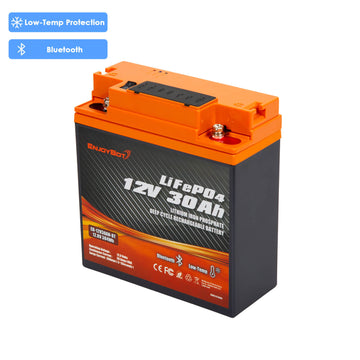




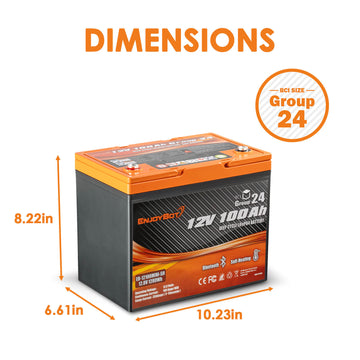



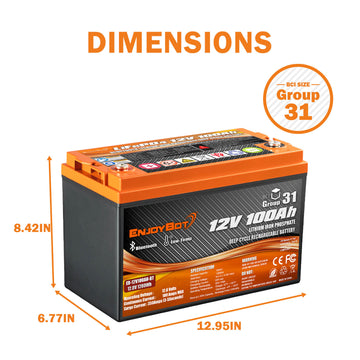








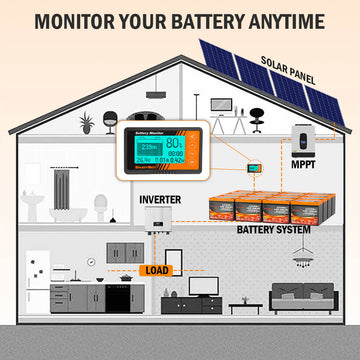
![[Upgraded Version] Enjoybot 14.6V 20A Waterproof Mountable LiFePO4 Lithium Battery Charger For 12V LiFePO4 Battery](http://enjoybotbattery.myshopify.com/cdn/shop/files/14.6V_20A_Waterproof_Battery_Charger_1_360x.jpg?v=1752565609)
![[Upgraded Version] Enjoybot 14.6V 20A Waterproof Mountable LiFePO4 Lithium Battery Charger For 12V LiFePO4 Battery](http://enjoybotbattery.myshopify.com/cdn/shop/files/14.6V_20A_Waterproof_Battery_Charger_2_360x.jpg?v=1752637374)
